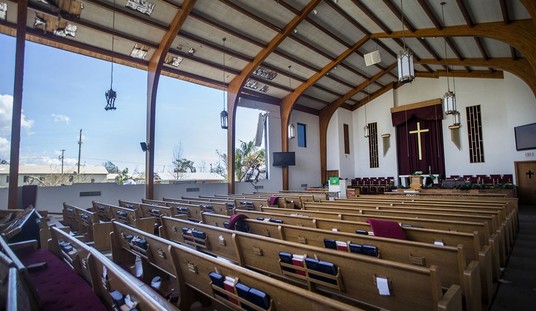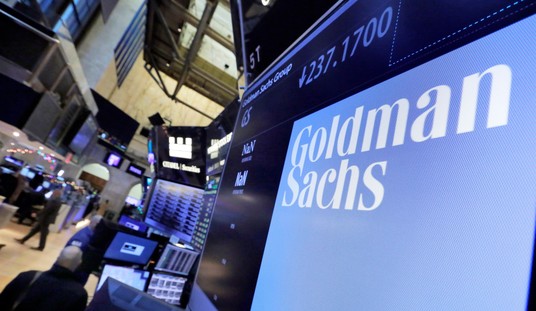Literally and figuratively.
Literally: Congress has appropriated upwards of $6 trillion in COVID relief over the past two years. Eventually that bill will come due and it won’t be you or I paying it.
But COVID relief was among the most justifiable spending binges the federal government has ever undertaken. Economic demand collapsed as frightened Americans sheltered from a new virus; Uncle Sam stepped in to try to keep workers and businesses afloat. That $6 trillion in emergency spending won’t break your kids and grandkids. It’s the $23 trillion in non-emergency spending that came before it that will.
As for the figurative debt, Jan Crawford voiced a sentiment yesterday on “Face the Nation” that’s common within conservative media but not so common outside of it.
“They will be paying for our generation’s decisions the rest of their lives”: @JanCBS explains why she thinks 2021's biggest underreported story was the devastating impact of COVID policies on children pic.twitter.com/AUU1f6AFNi
— Face The Nation (@FaceTheNation) December 26, 2021
If you read Karen’s post earlier this afternoon, you know just how heavy that debt can be for some children.
This grim but vivid NYT story about a high school in Bethlehem, Pennsylvania, is well worth your time as a study in the many ways the pandemic has damaged kids short of making them suicidal. The school’s principal warned his staff before the fall semester began that it would be the most difficult year for education since the Vietnam era, and he looks to have been right. Teens are essentially having to re-learn how to socialize after a year apart. Fighting among students is common; more are failing their classes than in the past. One administrator reports having watched a group of ninth-graders — teenagers — play “Duck Duck Goose,” as if they’d regressed to a younger stage of development. Returning to school is commonly described by teachers and students in terms of “re-entry,” “recivilizing,” and “reintegrating.”
Recivilizing? Yup:
The school’s wellness center has been overwhelmed with students struggling with anxiety and depression since the first day back. By the end of September, fights were frequent, and “blunt and flagrant disrespect” was rampant, Dr. Bailey said. In October, homecoming pep rallies were canceled for freshmen and sophomores, partly to follow Covid-19 restrictions and minimize crowds. By November, the principal was averaging at least one “informal hearing” per day for students who had been suspended.
By December, referrals for the school’s Student Assistance Program — in which teams of counselors and administrators coordinate resources for troubled students — had reached 300, compared with a total of 500 for the entire 2019-20 school year. At a recent meeting, where administrators sifted through their caseloads of “sapped” students, they described them in blunt terms: “feral,” “a mess” and “work in progress.”…
“People don’t know how to communicate anymore,” said Jazlyn Korpics, 18, a senior at Liberty. “Everybody’s a robot now — their minds are warped.”
The head of the school’s wellness center says many of the referrals they receive are for kids who were found sitting in the bathroom and crying seemingly for no reason.
I’d be keen to see a survey of mental wellness among kids across the 50 states and whether there’s a correlation with each state’s policy on school closures. Even those that kept their schools open, like Florida, won’t emerge fully unscathed. Kids who remained in class for the full year will still have been affected by fear of the virus and disincentives to socialize outside school, I’m sure. (“Soft lockdowns” can be as painful as hard ones.) But it has to be that red states that refused to shut down will see better mental-health outcomes on average than blue states that closed schools for 18+ months. On top of the educational benefits of getting to learn in class instead of remotely, maintaining their pre-pandemic rhythm of life by attending school every day must have made the disruption from COVID easier for red-state children.
One would hope that Democrats are listening and digesting Crawford’s message, and I think many are. Biden stressed in last week’s speech about Omicron that we need to do everything we can to keep schools open. In New York City, America’s Omicron hot spot, there are no public schools that are fully closed right now. If the palpable damage to kids wasn’t enough to convince risk-averse lefties to end school closures, the results in Virginia’s gubernatorial election should have been.
Yet sometimes old habits die hard.
Nearly 300 schools in the U.S. will remain closed for in-person classes after the winter break in an effort to address growing concerns over the latest COVID surge of the highly contagious Omicron variant.
At least four districts in Maryland, New Jersey, New Mexico and New York have opted to keep students at home in the first weeks back from the winter break in an effort to avoid a school outbreak once the holidays are over.
The closures mean hundreds of thousands of students who attend the 286 affected schools will move to virtual learning in January.
These people won’t rest until Republicans win every swing district in the country.
I’ll leave you with this, evidence that it’s not just kids whose mental health is collapsing under pandemic strain. Exit quotation from an official at the American Psychological Association: “We’re just not meant to live under this level of tension for such a prolonged period. So what that ends up doing is it really wears on our coping abilities to the point where we aren’t able to regulate our emotions as well as we could before.”
Delta flight from Tampa to Atlanta got crazy‼️ pic.twitter.com/I9BZUKv3LB
— ATL Uncensored | Atlanta News (@ATLUncensored) December 25, 2021








Join the conversation as a VIP Member